On the issue of adopting the new heavy ICBM
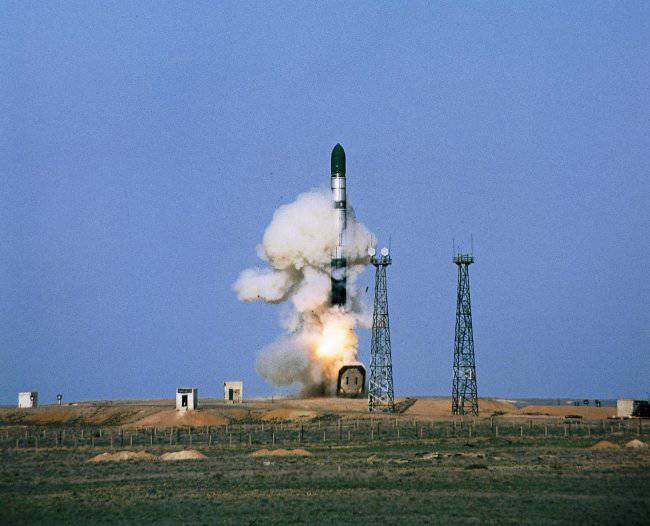
According to numerous media reports, 12, a consultant to the commander of the Strategic Missile Forces (Strategic Rocket Forces), former chief of the General Staff of the Strategic Missile Forces, Colonel-General Viktor Yesin, said that in 2018, Russia should adopt a new heavy liquid-based intercontinental ballistic missile (ICBM) of mine base in April megaton class, which will replace the PC-20 "Voyevoda." From the latter, the new ICBM will differ in increased survivability due to enhanced fortification protection of the launcher itself, as well as the adoption of a number of passive and active defense measures.
 According to Esin, a complex of protective measures "will force a potential enemy to expend significantly more of its nuclear warheads and high-precision weapons weapons“to withdraw their new ICBMs. But even in these conditions, this does not guarantee the destruction of the entire group of such missiles, some of which will survive and be able to strike back. Moreover, it is planned that the new ICBMs will be placed in existing silo launchers (silos), which will save significant funds, and according to another source, the complex of protective measures provides for the use of silos with new ICBMs and missile defense systems of the S-400 and S-500 type, capable of destroying ICBM warheads and ammunition of high-precision enemy weapons, to protect h. winged and aviation rockets, as well as guided bombs.
According to Esin, a complex of protective measures "will force a potential enemy to expend significantly more of its nuclear warheads and high-precision weapons weapons“to withdraw their new ICBMs. But even in these conditions, this does not guarantee the destruction of the entire group of such missiles, some of which will survive and be able to strike back. Moreover, it is planned that the new ICBMs will be placed in existing silo launchers (silos), which will save significant funds, and according to another source, the complex of protective measures provides for the use of silos with new ICBMs and missile defense systems of the S-400 and S-500 type, capable of destroying ICBM warheads and ammunition of high-precision enemy weapons, to protect h. winged and aviation rockets, as well as guided bombs.According to Esin, with reference to Vladimir Popovkin, First Deputy Minister of Defense of the Russian Federation, by the end of 2011, the RF Ministry of Defense should approve a tactical and technical task (TTZ) for the creation of a new heavy ICBM, the development and production of which is included in the State Armaments Program until 2020, B the creation of a new liquid ICBM will be attended by all domestic defense enterprises that previously created a naval missile for the Sinev submarine missile carriers.
The new START Treaty between the Russian Federation and the United States, which has entered into force, as the consultant to the commander of the Strategic Missile Forces especially stressed, does not impose any restrictions on the development by the parties of new carriers and their combat equipment, subject to the observance of the established quantitative limits on delivery systems and warheads.
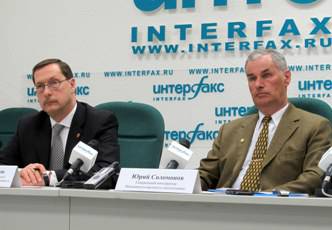 To this it should be added that in principle it is not news and talk about it for a long time. However, a number of experts and specialists in their fields of activity do not cease to express their opinion, which is somewhat different from the one given above. One of the last public events on this issue was the press conference "From parity in strategic armaments to reasonable sufficiency", which was held on 17 in March of the current year in the Interfax agency. The General Designer of the Moscow Thermal Engineering Institute (MIT), the developer of strategic missile systems, Academician of the Russian Academy of Sciences Yuri Solomonov and Head of the Center for International Security of the Institute of World Economy and International Relations of the Russian Academy of Sciences, member of RAS correspondent Alexey Arbatov.
To this it should be added that in principle it is not news and talk about it for a long time. However, a number of experts and specialists in their fields of activity do not cease to express their opinion, which is somewhat different from the one given above. One of the last public events on this issue was the press conference "From parity in strategic armaments to reasonable sufficiency", which was held on 17 in March of the current year in the Interfax agency. The General Designer of the Moscow Thermal Engineering Institute (MIT), the developer of strategic missile systems, Academician of the Russian Academy of Sciences Yuri Solomonov and Head of the Center for International Security of the Institute of World Economy and International Relations of the Russian Academy of Sciences, member of RAS correspondent Alexey Arbatov.According to Alexei Arbatov, the conclusion of START-3, which determined the permissible number of nuclear warheads (1550) and their carriers (700) is an undoubted achievement. According to this agreement, according to him, “the main problem for the Russian Federation is not how to reduce its weapons to the level fixed in the new agreement, but, on the contrary, how to rise to that level.” In other words, the objective process of moral and physical aging of Russian strategic forces by the end of the current 10 anniversary may lead to the fact that the actual number of carriers and warheads can be significantly lower than the established indicators and then take some time to achieve them.
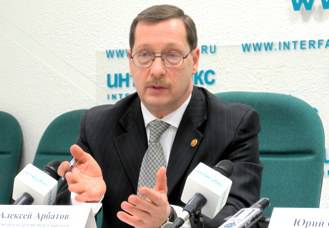 In this situation, there are three ways, according to A. Arbatov, that can be elected. The first is to agree with this and “not to make of this tragedy”, as he said, since the remaining funds will be enough to solve the tasks at hand. The second is to fill a possible gap between the established START-3 and real quantitative indicators to create a new heavy liquid MBR and place it in the existing silos instead of the "Governor" ("Satan" in the West). The third is to speed up the deployment of mobile and silo-based missile systems Topol-M and Yars, which is ahead of all previously created in this area, including and abroad.
In this situation, there are three ways, according to A. Arbatov, that can be elected. The first is to agree with this and “not to make of this tragedy”, as he said, since the remaining funds will be enough to solve the tasks at hand. The second is to fill a possible gap between the established START-3 and real quantitative indicators to create a new heavy liquid MBR and place it in the existing silos instead of the "Governor" ("Satan" in the West). The third is to speed up the deployment of mobile and silo-based missile systems Topol-M and Yars, which is ahead of all previously created in this area, including and abroad.Arbatov noted that the second way is very popular and his supporters do not doubt the speed of creation and adoption of the new ICBM, as there are already ready mines and known technologies. The political analyst believes that in this situation, according to the criterion "cost - efficiency", the second option is more beneficial and optimal, the implementation of which should be accelerated. He believes that the choice of the optimal path is “not only a serious issue of national security, but also international security in general, the prospects for agreements on joint missile defense depend on this.” He believes that "if we choose the option of creating a new heavy ICBM, then we can forget about joint missile defense," since "in this case, failure in negotiations on a new treaty is guaranteed."
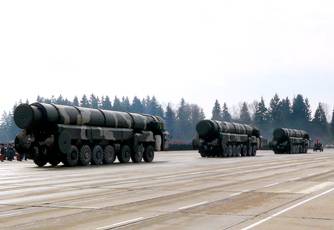 At the same time, he noted that talks about the high capabilities of the new ICBM to overcome missile defense can be regarded as what we deliberately think about the impossibility of reaching agreements in this area with the US and NATO, and based on this, we create the means of an asymmetric response in the form of a heavy rocket.
At the same time, he noted that talks about the high capabilities of the new ICBM to overcome missile defense can be regarded as what we deliberately think about the impossibility of reaching agreements in this area with the US and NATO, and based on this, we create the means of an asymmetric response in the form of a heavy rocket.As another solution to this problem, A. Arbatov proposes to begin negotiations on concluding a new treaty by the end of the current 10 anniversary with even lower figures that will be close to Russia's capabilities by the specified deadline. It can be fixed levels, for example, in relation to warheads within 1000-1100 units.
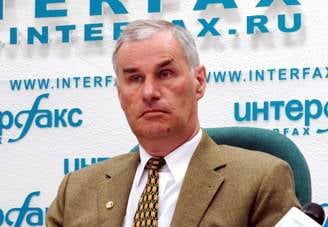 No less convincingly expressed his opinion on the desirability of creating and adopting a new ICBM known designer solid-propellant missile systems of strategic purpose, including. and Topol, Yuri Solomonov. He also noted that "the START-3 agreement is difficult to overestimate" and believes that "reducing even the parity level to a lower value, above all the number of warheads, I'm not talking about launch vehicles, of course, this is a step in the right direction" .
No less convincingly expressed his opinion on the desirability of creating and adopting a new ICBM known designer solid-propellant missile systems of strategic purpose, including. and Topol, Yuri Solomonov. He also noted that "the START-3 agreement is difficult to overestimate" and believes that "reducing even the parity level to a lower value, above all the number of warheads, I'm not talking about launch vehicles, of course, this is a step in the right direction" .However, according to him, “we are trying to maintain parity with the country, whose gross product, not to mention the budget, is ten times more than ours, and what in itself raises the question - do we need this?” As an example of a balanced approach to this issue, he cited China, which today is officially recognized as a country with the second largest economy in the world. Solomonov noted that with such "economic opportunities in 2007, the PRC officially had 200 warheads capable of reaching the territory of the United States," and by 2015, according to official plans, their number should be 220 units. And while in China there is no desire, by all means, to have parity on this issue with the United States or Russia. Yuri Solomonov noted that "we are once again attacking those" rakes "that we attacked in 1983 in connection with the well-known US SOI program."
Referring to the experience, as he was a direct participant in all related events, Y. Solomonov said: "Then I personally had a lot of work, as I wrote in my book, to convince the leadership of the military-industrial commission and representatives of the Central Committee that the information declared by the American media regarding X-ray-pumped lasers, free-electron nuclear weapons, and the like are hypothetical questions. "
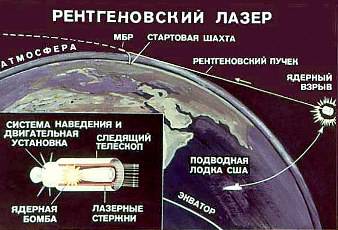 According to him, information about the PIO has been transformed into the requirements of the Ministry of Defense for the developed missile systems, "which" zeroed out "everything we have gained over the years and required additional costs. I'm not talking about some of the programs for which huge amounts of money were spent ". As the designer noted, there was nothing at the exit from everything declared in the United States about the PIO. “In reality, they were engaged in research, experiments, creating" bricks "of that" building "that was never built. And we, instead of responding in exactly the same way, created rocket complexes, including Voevod," Solomon.
According to him, information about the PIO has been transformed into the requirements of the Ministry of Defense for the developed missile systems, "which" zeroed out "everything we have gained over the years and required additional costs. I'm not talking about some of the programs for which huge amounts of money were spent ". As the designer noted, there was nothing at the exit from everything declared in the United States about the PIO. “In reality, they were engaged in research, experiments, creating" bricks "of that" building "that was never built. And we, instead of responding in exactly the same way, created rocket complexes, including Voevod," Solomon.Today, he considers the criterion "cost - efficiency" to be the uniform system criteria for development. “This is accepted all over the world, and if we act differently, we once again make the mistake of believing that the state’s financial, intellectual and material resources can be absolutely worthlessly spent,” said Solomonov.
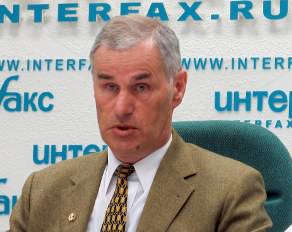 Answering one of the questions about the new heavy ICBM, Yuri Solomonov noted that “I have already expressed my reasoned opinion on the creation of such a rocket and add to what was reported by several publications, I have nothing. Once again I say that I consider it absolutely pointless by occupation. " At the same time, he said that the creation of a new liquid ICBM is based on technologies 30-year-old. “And the matter is not even in the level of these technologies, but in the very principle of creating a rocket system that does not possess the necessary vitality in a retaliatory strike,” said the famous designer. According to Y. Solomonov: "This launch vehicle is non-adaptive to modern concepts and anti-missile defenses with space-based elements, which is connected with the peculiarities of using liquid rocket engines with a sufficiently long active part of the climb."
Answering one of the questions about the new heavy ICBM, Yuri Solomonov noted that “I have already expressed my reasoned opinion on the creation of such a rocket and add to what was reported by several publications, I have nothing. Once again I say that I consider it absolutely pointless by occupation. " At the same time, he said that the creation of a new liquid ICBM is based on technologies 30-year-old. “And the matter is not even in the level of these technologies, but in the very principle of creating a rocket system that does not possess the necessary vitality in a retaliatory strike,” said the famous designer. According to Y. Solomonov: "This launch vehicle is non-adaptive to modern concepts and anti-missile defenses with space-based elements, which is connected with the peculiarities of using liquid rocket engines with a sufficiently long active part of the climb."Thus, judging by the statements of such well-known experts and experts, it should be noted that the unambiguous opinion and, especially, the decision to create a new heavy mine-based liquid ballistic missile, designed to replace the Voyevoda ("Satan") ICBM at present No. While the question of its creation can be considered resolved on the basis of what is one of the points of the State Armaments Program before 2020, it requires more in-depth research and refinement. We can assume that this process is now underway, ako, for obvious reasons, the general public about its details are not reported.
Information